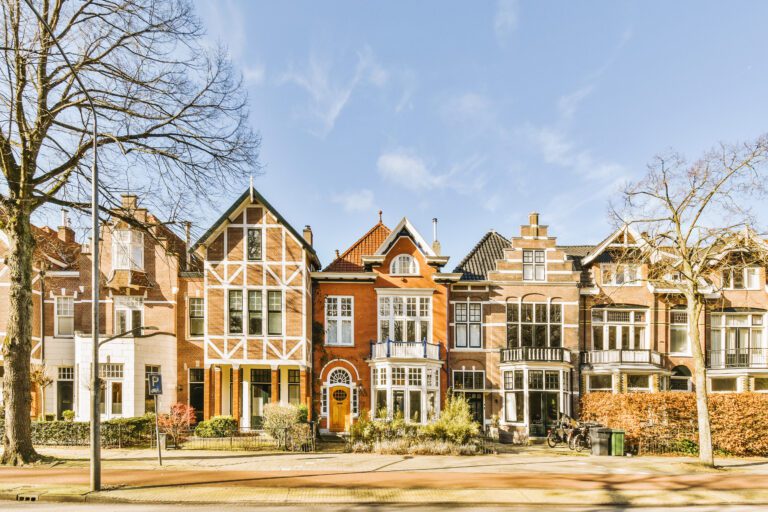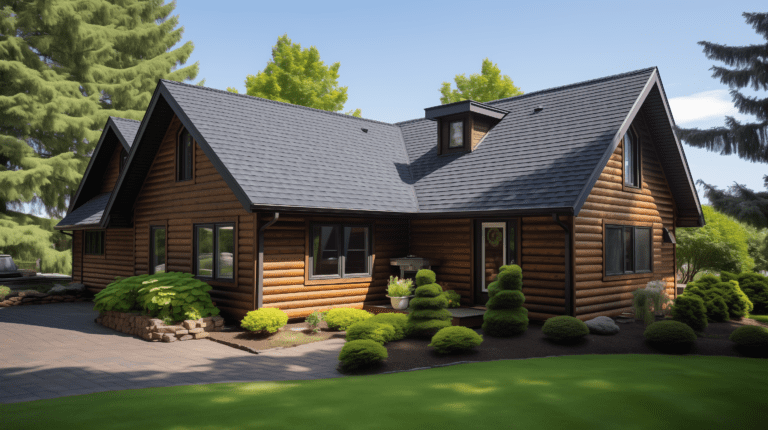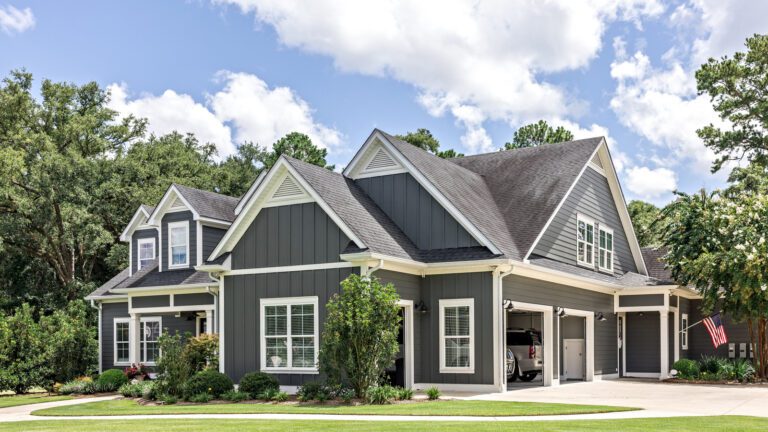Dutch Lap Vinyl Siding: Your Home’s Makeover Solution!
Want to give your home a fabulous facelift? Dive into the wonderful world of Dutch Lap Vinyl Siding.
History Lesson: Dutch settlers are the brains behind this! They introduced the nifty overlapping horizontal panels, creating that classic shadow line effect. Thanks to them, our homes are looking chic while battling the elements.
Beauty Meets Durability: Not just a pretty face. This siding resists rot, warping, and bugs. Plus, it’s a breeze to maintain. Just a little soap and water, and voila! Your house shines.
Color Galore: From sassy, bold hues to timeless whites, there’s a shade of Dutch Lap Vinyl Siding for every home.
Making the Magic: Made primarily from PVC resin, this siding gets its strength and colors from a blend of stabilizers and pigments. The manufacturing process involves heat, pressure, and a lot of precision to create those perfect panels.
Easy Peasy Installation: While best done by pros, the process involves prepping your home’s surface, attaching the panels from the bottom up, overlapping as you go.
Cost and Value: Price varies based on size, brand, and customization. But investing in this siding is like putting money in the bank. It boosts your home’s curb appeal and value while saving on future maintenance costs.
In short, Dutch Lap Vinyl Siding is a blend of rich history, stellar design, and durability. Whether you’re a history buff, a style guru, or a practical homeowner, this siding has something for everyone!
What is Dutch Lap Vinyl Siding?
Dutch Lap Vinyl Siding is a popular choice for homeowners looking to enhance the appearance and functionality of their homes. In this article, we will explore the basics of Dutch Lap Vinyl Siding, its manufacturing process, the benefits of choosing this type of siding, the installation process, and its cost and value. By the end of this article, you will have a comprehensive understanding of Dutch Lap Vinyl Siding and its advantages for your home.
ARTICLE TAKEAWAY
- Origin: Introduced by early American Dutch settlers.
- Design: Overlapping panels for a unique shadow effect.
- Durability: Made from premium vinyl; resistant to rot, warping, and insects.
- Maintenance: Low upkeep with occasional cleaning.
- Options: Wide variety of colors and finishes.
- Popularity: A top choice due to its blend of aesthetics, longevity, and minimal maintenance.
Understanding the Basics of Dutch Lap Vinyl Siding
The History and Origin of Dutch Lap Vinyl Siding
Dutch Lap Vinyl Siding has a rich history that dates back to the early days of settlement in the United States. Its distinct profile and design can be traced back to the Dutch settlers who brought their carpentry skills and traditions with them. These settlers, known for their craftsmanship, introduced the concept of overlapping horizontal rows of panels to create a unique shadow line effect, giving the siding its characteristic Dutch Lap name.
As the Dutch settlers established their homes in the new land, they quickly realized the need for a siding material that could withstand the harsh weather conditions and provide excellent insulation. Dutch Lap Vinyl Siding proved to be the perfect solution, as it offered exceptional durability and protection against the elements.
Over time, the popularity of Dutch Lap Vinyl Siding grew, spreading beyond the Dutch settlements and becoming a favored choice among homeowners across the country. Its reputation for longevity and resistance to rot and damage made it a reliable option for those seeking a low-maintenance and cost-effective siding solution.
Key Features of Dutch Lap Vinyl Siding
One of the standout features of Dutch Lap Vinyl Siding is its unique profile. The horizontal rows of overlapping panels create a distinctive shadow line, adding depth and character to any home. This design element not only enhances the visual appeal of the siding but also provides an extra layer of protection against moisture and wind.
In addition to its aesthetic appeal, Dutch Lap Vinyl Siding is known for its exceptional durability. Made from high-quality vinyl materials, this siding style is resistant to rot, warping, and insect damage, ensuring that it will maintain its beauty and functionality for many years to come.
Another advantage of Dutch Lap Vinyl Siding is its low maintenance requirements. Unlike traditional wood siding, which often requires regular painting and sealing to maintain its appearance, Dutch Lap Vinyl Siding only needs occasional cleaning with soap and water to keep it looking its best. This not only saves homeowners time and effort but also reduces long-term maintenance costs.
Furthermore, Dutch Lap Vinyl Siding offers homeowners a wide range of color and finish options. Whether you prefer a classic white siding to complement a traditional home or a bold, vibrant color to make a statement, there is a Dutch Lap Vinyl Siding option to suit every personal style and architectural design.
Overall, Dutch Lap Vinyl Siding combines a rich history, distinctive design, durability, and low maintenance requirements to create a siding option that is both practical and visually appealing. With its ability to withstand the elements and enhance the beauty of any home, it is no wonder that Dutch Lap Vinyl Siding continues to be a popular choice among homeowners today.
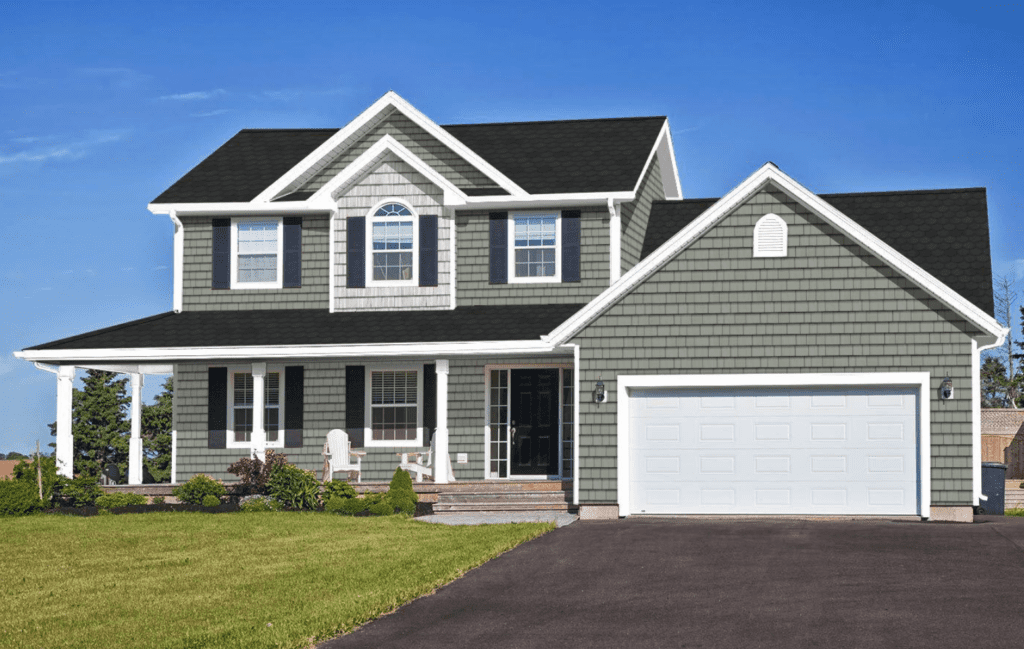
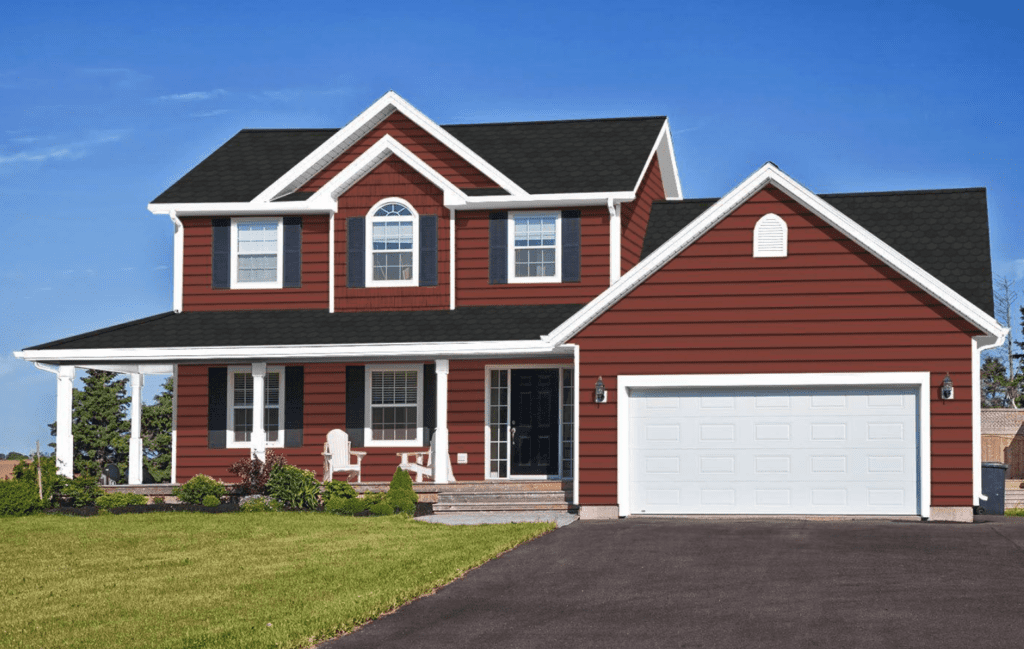
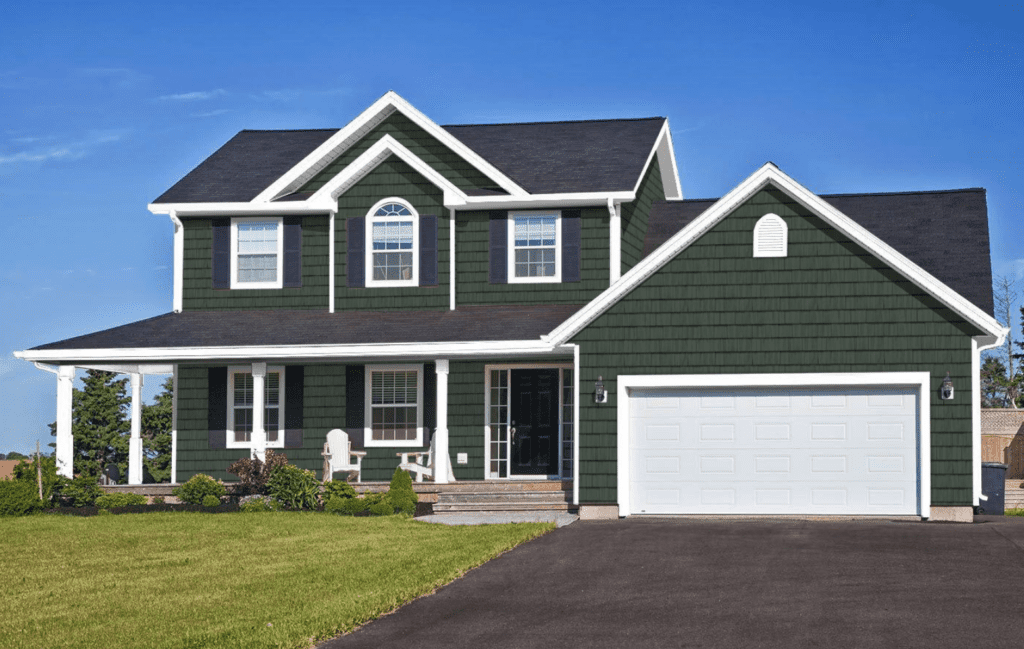
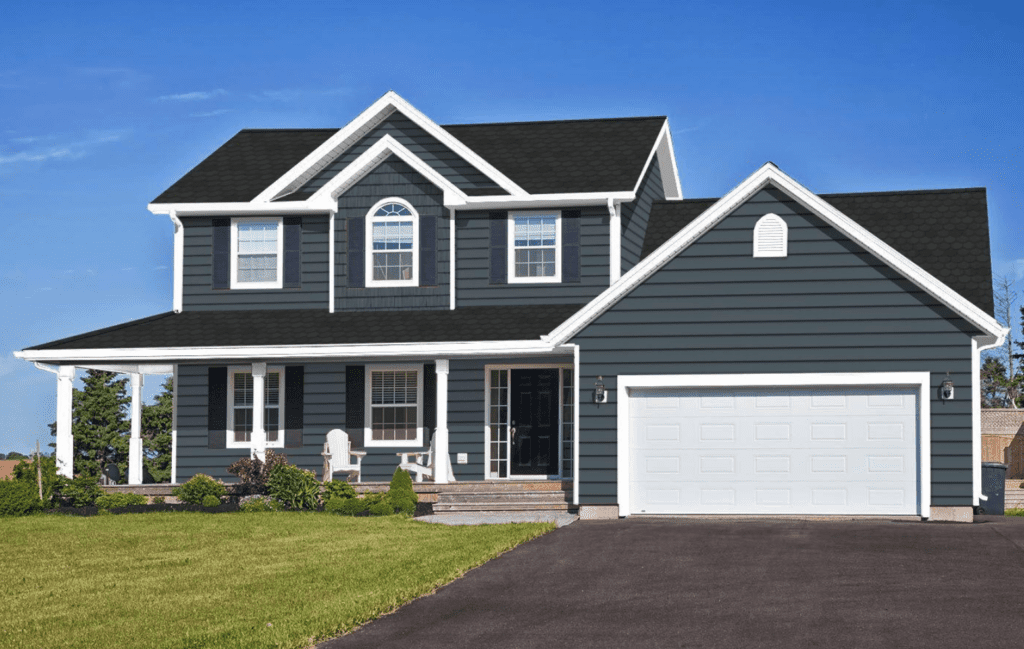
SIDING VISUALIZER TOOL
Design A Home In 5 Minutes
Help your homeowners visualize new siding and colors on their own home with Renoworks’ AI technology in seconds.
- Easy-to-use interface designed for contractors and professionals working with homeowners.
SECTION TAKEAWAY
Materials: Base Material: Polyvinyl chloride (PVC) resin known for strength and flexibility.
Additives: Added weather resilience, colour pigmentation, and UV stabilizers
Manufacturing Steps: PVC and additives are mixed in precise proportions. The mixture undergoes extrusion to shape into the distinct Dutch Lap profile. Rigorous quality control inspections for strength, colorfastness, and texture. Siding is cut, packaged, and shipped, ensuring protection during transit.
End Result: A durable, aesthetically pleasing siding choice that withstands harsh conditions and retains its vibrant color over time.
The Manufacturing Process of Dutch Lap Vinyl Siding
Dutch Lap Vinyl Siding, a popular choice for homeowners, undergoes a meticulous manufacturing process to ensure its durability and aesthetic appeal. Let’s take a closer look at the materials used in production and the steps involved in creating this high-quality siding.
Materials Used in Production
Dutch Lap Vinyl Siding is typically made from polyvinyl chloride (PVC) resin, a versatile material known for its strength and flexibility. This resin serves as the foundation of the siding, providing a sturdy structure that can withstand the test of time. To enhance its properties, various additives are incorporated into the PVC mixture.
Stabilizers play a crucial role in maintaining the integrity of the siding, preventing it from degrading due to exposure to heat, cold, or moisture. These additives ensure that the siding remains robust and resilient, even in the face of extreme weather conditions.
Pigments are another essential component of Dutch Lap Vinyl Siding. By adding pigments to the PVC mixture, manufacturers can create a wide range of colors and finishes. This allows homeowners to choose a siding color that complements their home’s architectural style and personal taste.
Additionally, UV stabilizers are incorporated into the PVC mixture to protect the siding from the harmful effects of ultraviolet (UV) rays. These stabilizers prevent color fading and ensure that the siding maintains its vibrant appearance over time.
Steps in the Manufacturing Process
The production of Dutch Lap Vinyl Siding involves a series of carefully orchestrated steps, each contributing to the overall quality of the final product.
First, the PVC resin is mixed with the necessary additives in precise proportions. This ensures that the resulting mixture possesses the desired characteristics, including strength, flexibility, and resistance to environmental factors.
Once the PVC mixture is thoroughly blended, it is fed into an extruder, a machine that applies heat and pressure to shape the material. The mixture is forced through a die, which imparts the distinctive profile of Dutch Lap Vinyl Siding. This process ensures that each piece of siding is uniform in shape and size, guaranteeing a seamless installation.
After the extrusion process, the newly formed siding goes through a meticulous quality control process. Highly trained technicians inspect the siding for any defects, ensuring that it meets the necessary standards for strength, colorfastness, and texture. This rigorous quality control ensures that homeowners receive a product that not only looks great but also performs exceptionally well.
Finally, the siding is cut into the appropriate lengths and carefully packaged for distribution to suppliers and contractors. The packaging is designed to protect the siding during transportation, ensuring that it arrives at its destination in pristine condition.
By following these meticulous steps, manufacturers of Dutch Lap Vinyl Siding are able to deliver a product that not only enhances the aesthetic appeal of homes but also provides long-lasting protection against the elements. Whether it’s protecting against harsh weather conditions or maintaining its vibrant color for years to come, Dutch Lap Vinyl Siding is a reliable and attractive choice for homeowners.




SIDING VISUALIZER TOOL
Design A Home In 5 Minutes
Help your homeowners visualize new siding and colors on their own home with Renoworks’ AI technology in seconds.
- Easy-to-use interface designed for contractors and professionals working with homeowners.
SECTION TAKEAWAY
Materials: Base Material: Polyvinyl chloride (PVC) resin known for strength and flexibility.
Additives: Added weather resilience, colour pigmentation, and UV stabilizers
Manufacturing Steps: PVC and additives are mixed in precise proportions. The mixture undergoes extrusion to shape into the distinct Dutch Lap profile. Rigorous quality control inspections for strength, colorfastness, and texture. Siding is cut, packaged, and shipped, ensuring protection during transit.
End Result: A durable, aesthetically pleasing siding choice that withstands harsh conditions and retains its vibrant color over time.
Benefits of Choosing Dutch Lap Vinyl Siding
Durability and Maintenance
Dutch Lap Vinyl Siding is renowned for its durability, making it an excellent long-term investment for homeowners. Unlike traditional wood siding, it is resistant to pests, rot, and warping, reducing the need for frequent repairs or replacements. This means that homeowners can enjoy the peace of mind that comes with knowing their home’s exterior is protected from the elements and will maintain its beauty for years to come.
In addition to its durability, Dutch Lap Vinyl Siding requires minimal maintenance. Unlike other types of siding that need to be painted or stained regularly, vinyl siding only requires regular cleaning with mild soap and water to keep it looking its best. This not only saves homeowners time and effort but also eliminates the need for ongoing maintenance costs.
Aesthetic Appeal and Variety
Another significant advantage of Dutch Lap Vinyl Siding is its aesthetic appeal. The overlapping panel design creates a visually pleasing shadow effect, adding dimension and elegance to any home exterior. This unique design feature sets Dutch Lap Vinyl Siding apart from other siding options, giving homes a distinctive and eye-catching look.
Furthermore, this type of siding is available in a wide variety of colors, finishes, and textures, allowing homeowners to select the perfect style to match their preferences and architectural design. Whether aiming for a classic, rustic, or modern look, Dutch Lap Vinyl Siding offers options to suit every taste. From bold and vibrant colors to subtle and natural tones, homeowners can easily find the perfect shade to enhance the overall aesthetic of their home.
Moreover, Dutch Lap Vinyl Siding is not only visually appealing but also versatile. It can be used to accentuate architectural details or create a cohesive and uniform look for the entire exterior. With its ability to complement various architectural styles, Dutch Lap Vinyl Siding offers homeowners the freedom to express their personal style and create a home that stands out in the neighborhood.
Additionally, Dutch Lap Vinyl Siding is designed to withstand the test of time without fading or losing its original beauty. The color and finish options are engineered to resist the damaging effects of UV rays, ensuring that the siding will retain its vibrant appearance for years to come. This means that homeowners can enjoy a beautiful and well-maintained home exterior without the need for frequent repainting or refinishing.
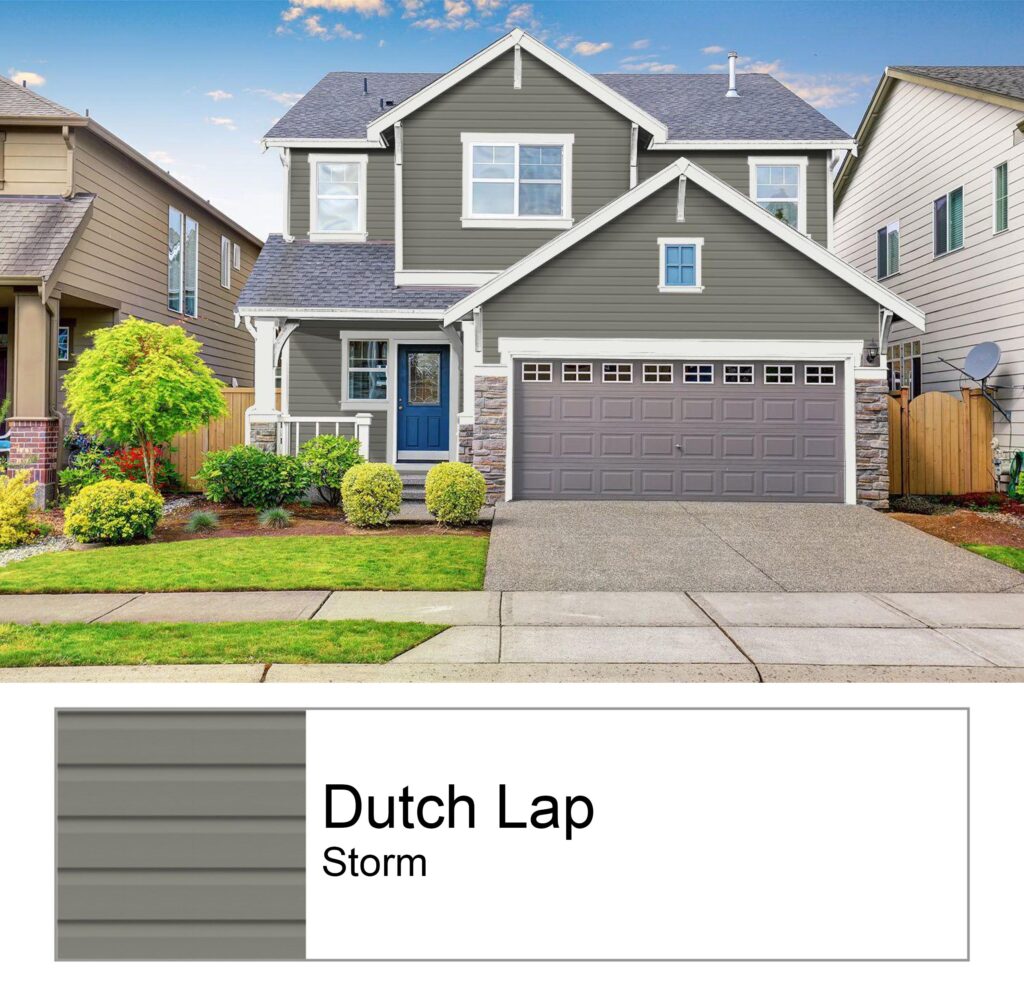
Installation Process of Dutch Lap Vinyl Siding
Preparing for Installation
Prior to installation, it is crucial to properly prepare the surface of your home. This involves removing any existing siding, repairing any damaged areas, and ensuring a smooth, clean base. It is also recommended to install a weather-resistant barrier, such as a house wrap or building paper, to provide an extra layer of protection against moisture and drafts.
Step-by-Step Installation Guide
The installation of Dutch Lap Vinyl Siding is typically done by professional contractors. The process involves measuring and cutting the siding to fit the dimensions of each wall. Starting from the bottom, the siding panels are securely attached to the wall using nails or screws in the designated mounting slots. As each row is completed, the next row overlaps the previous one, creating the distinct Dutch Lap profile. It is essential to follow the manufacturer’s guidelines and recommendations for proper installation techniques and tools.
Cost and Value of Dutch Lap Vinyl Siding
Pricing Factors
The cost of Dutch Lap Vinyl Siding can vary depending on several factors. The size of your home, the chosen brand and quality of the siding, additional insulation options, and any customization requirements can all impact the overall price. It is advisable to obtain quotes from multiple suppliers and contractors to compare prices and ensure you are getting the best value for your investment.
Return on Investment
Investing in Dutch Lap Vinyl Siding can provide a significant return on investment for homeowners. Not only does it enhance the curb appeal and overall aesthetic of the home, but it also increases its value. Additionally, the durability and low maintenance requirements of vinyl siding translate into long-term cost savings by reducing the need for frequent repairs and repainting.
Conclusion
Dutch Lap Vinyl Siding offers homeowners a durable, visually appealing, and low maintenance siding option. Its unique profile and wide range of colors and finishes make it a versatile choice for any architectural style. By understanding the basics of Dutch Lap Vinyl Siding, its manufacturing process, benefits, installation, and cost considerations, you can make an informed decision about whether this type of siding is the right choice for your home.




SIDING VISUALIZER TOOL
Design A Home In 5 Minutes
Help your homeowners visualize new siding and colors on their own home with Renoworks’ AI technology in seconds.
- Easy-to-use interface designed for contractors and professionals working with homeowners.
Related Articles
Continue exploring this topic with these related articles, or read one of our case studies to see how visualization has helped remodelers save time and increase their profits.


